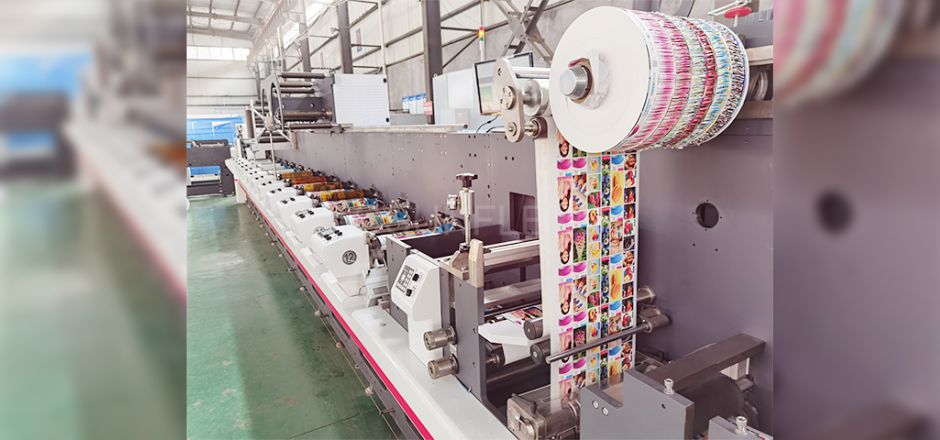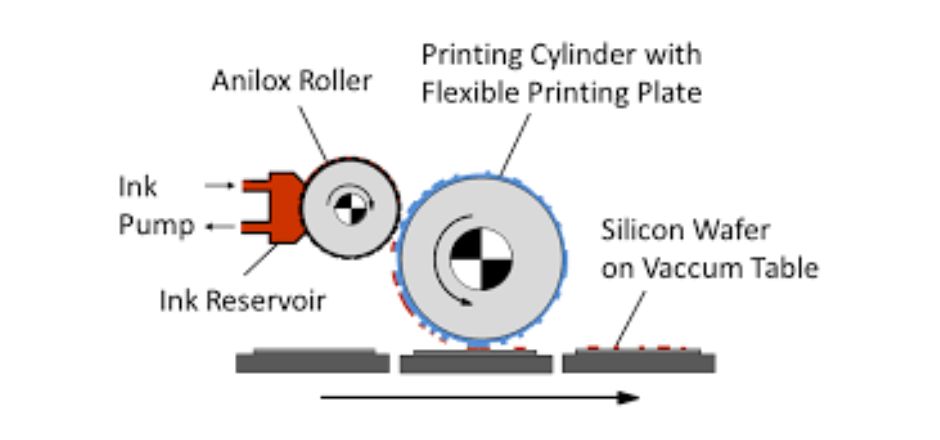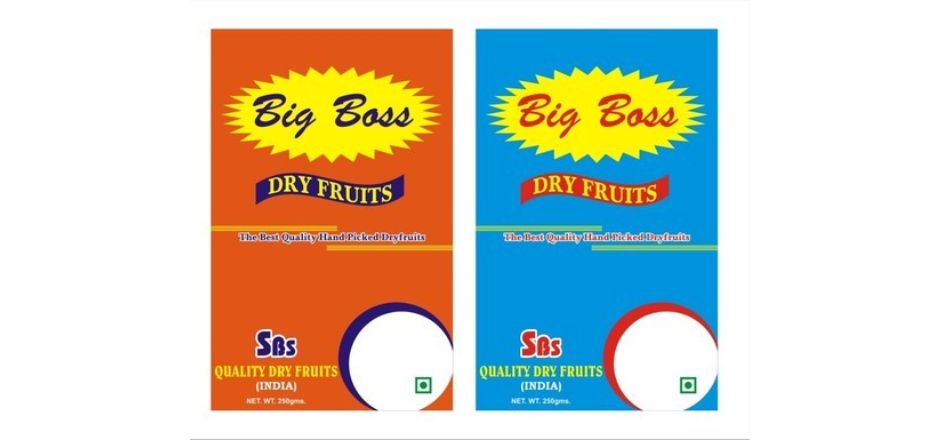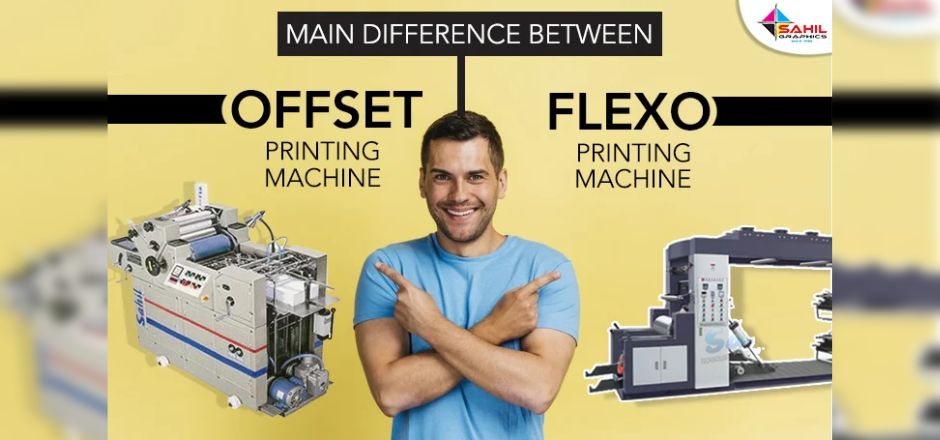
What is a Packaging Prototype and Why You Would Need One?
June 24, 2022
Top 17 Packaging Pre-media Companies in India
June 24, 2022The Ultimate Guide to Flexographic Printing
Flexographic printing is one of the most versatile, cost-effective, and widespread printing methods in the world. It is also one of the most misunderstood printing processes, with many people mistakenly believing that flexo is a type of ink. In reality, it’s an entire printing process that can be used to print on almost any substrate imaginable — from paper and plastic to aluminum, glass, and even food.

What is Flexographic Printing?
Flexographic printing is a process that uses heat and pressure to transfer ink onto a range of different substrates. It has grown in popularity due to the wide variety of substrates it can print on and its high degree of detail.
Unlike traditional lithographic printing, flexographic printing does not use water and instead uses oil-based inks. This makes for a faster and more effective process than lithography, which often requires days of drying time between each step.
CG Premedia offers a variety of flexo printing services to meet your business needs. In this article, you will learn about the various types of flexo printing and why your business should invest in this process. You’ll also get tips on how to choose the right flexo printer if you’re ready to invest in this type of equipment.
In this article, we’ll cover everything you need to know about flexographic printing, why it’s such an effective process, and how you can leverage its advantages in your own business.
What Makes the Flexographic Printing Process Unique?
Flexographic printing is a method of applying ink onto a flat surface using a blanket, drum, or press. It’s used in the printing industry because it’s inexpensive and produces high-quality results. Flexography is used in everything from posters and labels to T-shirts and packaging.
In its most basic form, flexography involves covering a surface with a flexible material (such as paper or plastic) and pressing it against a rigid surface (like cardboard). A roller or roller head then presses down on the flexible surface, forcing the ink under pressure through the blanket and onto the other surface.
Typically, flexography involves several steps:
- Applying ink to a substrate
- Applying pressure to force ink through the substrate
- Removing the substrate from the blanket
- Transferring ink from the blanket to another substrate
- Repeat steps 1-4 until the desired effect is achieved.
Flexographic printing is the process of creating a print with a combination of fine and thick lines on a flexible surface, like paper. It’s sometimes called flexography, flexo printing, or flex scope.
In addition to being used for printing on paper, flexography can also be used to create prints on plastic or metal. For example, flexible substrates can be used to produce large-scale posters or signs.
Flexographic printing is very similar to letterpress printing but differs in that it uses ink instead of type. Both processes are considered typesetting. Because it has a lot of similarities with letterpress printing, many people think of flexography as just another type of letterpress printing.
However, flexography is actually a separate process that produces results that are not always comparable to letterpress printing. While letterpress printing uses heavy plates (or stereotype plates) to press ink onto paper, flexography uses light sheets (or placemats) to press ink onto paper or plastic. In both processes, the image is transferred from the plate to the paper by rubbing the plate over the paper in back-and-forth movements called impressions.
Letterpress printing does this by hand; flexography does this by machine (via rolling). The difference is that in flexography, the ink is transferred onto the substrate through a roller pressing against the substrate and transferring ink during each pass.
How Does Flexographic Printing Work?

It has 3 Basic Steps:
- Designing your artwork is the first step in flexographic printing. It can be difficult to create a design that meets the specifications required to produce the final desired print. Failure to thoroughly proofread your artwork can lead to costly errors.
Once produced, image carriers cannot be changed.
- The flexographic printing press’s rolling design allows continuous substrate materials (in roll form) to be fed through the machine. This flexographic feature enables the continuous printing process, which can achieve high speeds while maintaining accuracy and efficiently producing large print runs.
- The Flexographic Printing Press
- Unwind and Infeed – A substrate roll is fed into the printing press. Tension must be maintained to avoid slack, which can result in wrinkling, misregistration, web breaks, and other print defects.
- Enclosed Doctor Blade Inking System – An ink-filled enclosed chamber is filled by a continuous cycling pump. The ink is applied to the anilox roll, and any excess is removed with a doctor’s blade. During printing, ink flows in and out of the enclosed system. We’ve also created an Ink 101 Guide to help you learn more about ink!
- The anilox roller contains microscopic cells that transport a thin layer of ink from the inking system to the image carrier. Water-based, solvent-based, oil-based, and UV inks are the four main types of inks available. Finding the right ink composition is critical for selecting anilox and image carrier materials.
- Impression Cylinder and Image Carrier – The image carrier transfers the image to the substrate. The substrate is pulled between the image carrier and the impression cylinder by the flexographic press. At the same time, the impression cylinder applies precisely the right amount of pressure to the substrate for even ink distribution.
- To dry the ink, the substrate winds through roller-less and plate-less sections. The substrate may pass through multiple image carriers, impression cylinders, and drying sections in a single print run, depending on the number of colors used (one per color).
- Outfeed and Rewind – The final step on a flexographic printing press is the outfeed and rewind, which involves rolling up a substrate again in preparation for a cutting die, which separates individual prints.
Why is Flexographic Printing used?
Flexographic printing is a method of printing text and images by placing the paper on a flexible plastic surface. This allows the paper to be folded, rolled, or stretched while it is being printed. The ink is pressed into the plastic sheet, creating a durable print.
Flexographic printing is commonly used in the production of magazine and newspaper ads and packaging. Because it can be done quickly and at a relatively low cost, flexographic printing is widely used in many industries.

In addition to its widespread use in advertising, flexography has been used for centuries in letterpress printing. The oldest known flexography press was built by Johann Gutenberg in the 15th century. Today, flexographic printing continues to be widely used for commercial purposes.
Advantages & Disadvantages of flexographic printing
Flexographic printing has several benefits and drawbacks. It is a printing technique that uses a fed material to produce high-quality prints at a high speed. This printing style is suitable for all types of product labels and can be used in large quantities.
Flexographic printing is appropriate for a wide range of materials and substances. To produce high-quality prints, you can use a variety of inks.
Advantages of Flexography
i) High automation
Flexographic printing has the advantage of completing the entire process, separating the cutting die for each design into uniform and proper sizes. The flexographic method can be used to complete the entire printing process. This is in contrast to other more manual printing methods.
ii) Saves cost
This is due to the low cost of labor, materials, and quick turnaround time. One example of such material is ink, which is less expensive than other printing methods. The plates are the most expensive part of flexographic printing because each color has its plate and each has a cost. However, other aspects of flexographic printing are less expensive.
iii) A faster method of printing
Flexographic printing makes use of web-fed materials, which saves printers space. This complements the design both horizontally and vertically. These printers can be used to generate more content on an hourly basis. Flexographic printers can print approximately 750 meters per minute or 45 kilometers per hour. Flexographic printing is thus a faster method of printing than other types of printing.
Flexographic printing disadvantages
i) Initial setup can be time-consuming.
Flexographic printing requires a significant amount of setup time. This is because the entire process has been automated. A person must install its material, assign colors to relevant plates, wrap the plate cylinders with relevant plates, and install the proper cutting die. This can take some time.
ii) Insufficient for small quantities
Such time investment is not appropriate for printing in smaller quantities. Flexographic printing takes a long time to set up and is not recommended for printing small quantities. For such printing, use different methods. It is up to businesses to compare and analyze whether or not to use flexographic printing based on the sizes of what they print.
The difference between flexographic and offset printing
Flexo image carriers, such as sleeves, cylinders, and plates, are typically made of polymer or elastomer. To create the raised design of the final desired print, the image carrier is engraved. The ink is then transferred from the inkwell to the image carrier via an anilox roller before being printed onto the substrate.

Flexo printing is more commonly associated with applications in flexible plastics and other non-porous materials like film, labels, foil, and other packaging.
How does offset printing differ from flexo printing? Offset printing also employs a plate, which is typically made of metal, and the printing ink is transferred from the plate to a rubber piece (often referred to as a “blanket”) and then to the printing surface.
Offset printing is most commonly used on paper (think newspapers and magazines), where a flat and smooth surface is critical to success.
Offset Printing vs Flexo Printing: Key Differences
There are several significant differences between offset and flexo printing as well.
- Inks
- Maintenance
- Affordability
- Convenience
Conclusion
Flexographic printing is one of the most commonly used printing methods in the world today. It is used in everything from packaging to product labeling to even the printing of money.
With that in mind, many people are interested in learning more about how to use this printing method to produce the highest quality prints possible.
Flexographic printing is a fantastic and cost-effective way to print, and it can be used for all sorts of applications. We hope this article has served as a useful introduction to the subject of flexographic printing.
If you want to learn more about the topic, check out the Flexographic Printing Association at CG Premedia.
FAQ’S
1. What is the Future of Flexographic Printing?
Ans. Flexographic printing’s global value will increase from $167.7 billion in 2020 to $181.1 billion in 2025, with a compound annual growth rate (CAGR) of 1.6 percent at constant prices, driven by package and label printing as well as sanitary/kitchenware. Asia and Eastern Europe will be the fastest-growing regional markets.
2. How can I Improve My Flexo Print?
Ans. Increasing Flexo Packaging Printing Speed
- Anilox roller alignment.
- Substrate surface tension.
- Image carriers: sleeves, cylinders, or plates.
- Drying times and ink types.
- Pressroom conditions.
3. In Flexographic Printing, What Causes the Dots?
One of the most common causes of dot gain – and one of the simplest to avoid – is excessive pressure. Flexo is a pressure-sensitive process, and using too much or too little pressure can have a significant impact on print quality and consistency.




